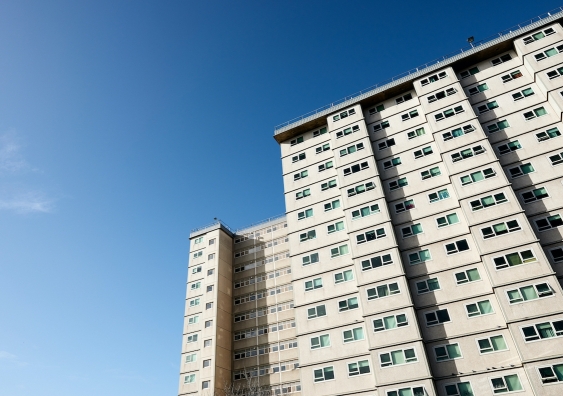Governments are failing to provide a secure alternative for households unable to access social housing, new research suggests.
Private rental assistance is failing to provide a secure alternative for those unable to access social housing, says a new report. It finds low-income households are finding it difficult to find and sustain secure housing in the private rental market even with government subsidisation.
, undertaken for the Australian Housing and Urban Research Institute (AHURI) by researchers from ôÕÑ¿èÓmadou Sydney and RMIT University, investigates how policymakers and housing providers can use other forms of housing assistance to support people who are otherwise eligible for social housing. The research involved surveys and interviews with social housing tenants and applicants, interviews with representatives from housing provider agencies, and a review of statistics on social housing allocations and other forms of housing-related government support.
Most housing assistance in Australia is delivered through private rent assistance payments to help secure or sustain private rental housing rather than a social housing tenancy. However, the effectiveness of these assistance schemes is highly dependent on market conditions.
ãPrivate rental assistance recipients are finding it increasingly difficult to secure private rental properties,ã says lead researcher Dr Fatemeh Aminpour from the at ôÕÑ¿èÓmadou Arts, Design & Architecture. ãThis raises serious questions about the viability of private rental assistance as an alternative to social housing in jurisdictions like Australia, where the private rental sector is relatively under-regulated and volatile.ã
Just because households are allocated private rental assistance doesnãt mean they are guaranteed access to a suitable private rental property. More than half of the participants in the research who had previously received a bond loan or ongoing private rental subsidy were unable to sustain their private rental tenancy.
Media enquiries
For enquiries about this story and interview requests, please contactô Ben Knight, News & Content Coordinator, ôÕÑ¿èÓmadou Arts, Design & Architecture.
Ýò°µÇúýåÝÞ:ä»(02) 9065 4915
ñÀ°ƒý¿ƒÝݶ:ä»b.knight@unsw.edu.au
High social housing demand
Social housing remains the form of housing assistance to which most rent assistance applicants aspire due to its relative stability, affordability, and security. However, Australiaãs social housing provision has drastically declined during the past 30 years, and new lettings to new tenants have reduced by more than 61 percent when factoring in population growth.
ãThe scarcity of new social housing places means many applicants have no guarantee of when they will be housed,ã says Dr Aminpour. ãInstead, Australian governments are having to look to private rental market assistance as a way to support households.ã
In 2021-22, across Australia, over 174,600 households applied to live in social housing, but only 29,100 households were offered a home. At the same time, more than twice as many households (70,100 households) were offered private rental assistance.
ãSocial housing is increasingly aimed at households with acute or complex social or medical vulnerabilities, in addition to traditional considerations relating to financial hardship,ã Dr Aminpour says. ãThe growing emphasis on private rental assistance by governments aims to relieve pressure on social housing waiting lists by diverting lower-need applicants to the private rental sector.ã
Private rental assistance recipients are finding it increasingly difficult to secure private rental properties.
Rent assistance ineffective in current market
While private rent assistance aims to help lower-income households sustain private rental tenancies, the report finds that these forms of assistance are ineffective in the current market. found just 8 per cent of rentals in Greater Sydney were considered affordable for people on income support or minimum wage.
Private rental assistance programs emphasise the applicantãs capacity to afford a private rental property. Most private rental assistance programs have eligibility cut-offs that only permit applicants to receive support if the rent for the property they are applying for is less than 50-55 per cent of their income to prevent applicants from taking on unaffordable tenancies.
ãResearch participants widely considered private rent assistance schemes as ineffective due to the lack of affordable private rental housing available in their area,ã Dr Aminpour says. ãBeing assisted in gaining access to housing, which is the prime aim of these types of interventions, did not necessarily overcome the problem of sustaining the private rental tenancy.
ãFor many, such help was perceived as failing to fully acknowledge the severity of their housing needs.ã
Improving rent assistance processes
Despite these challenges, private rental assistance remains essential in supplementing social housing waiting lists.
The research identifies various opportunities to improve current processes for managing private rental assistance for social housing applicants. This includes making the application process and housing assistance system more transparent by ensuring applicants have the necessary information and advice during the social housing application process and that housing assistance staff understand their clientãs needs and aspirations.
ãOnly 25 per cent of recent social housing applicants were satisfied with the social housing application process,ã Dr Aminpour says. ãMany complained about the complexity of the application process, to the point that some had wanted to give up and not apply at all.ã
Developing individual plans for clients who may be eligible for social housing but not of high priority would also enable them to access other available services, including private rental assistance.
ãWe also see there is scope for state and territory governments to establish partnerships with private landlords to secure rental tenancies for low-income families who receive private rental assistance products,ã says Dr Aminpour. ãGovernments could offer guarantees against any rental losses occurring in tenancies of homes covered by such an agreement.ã








